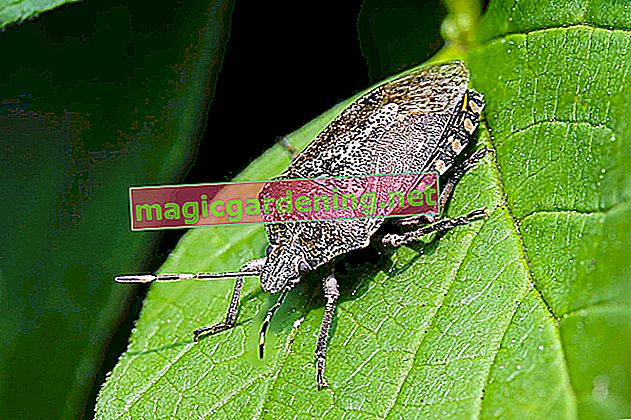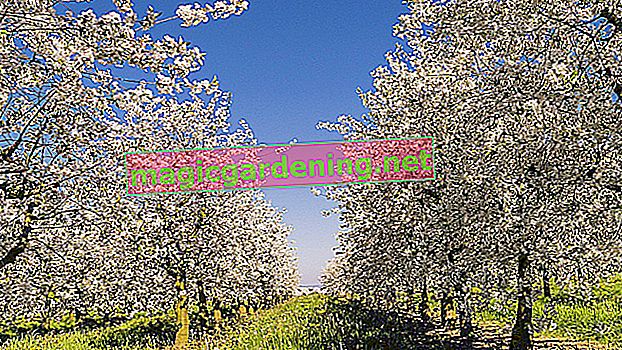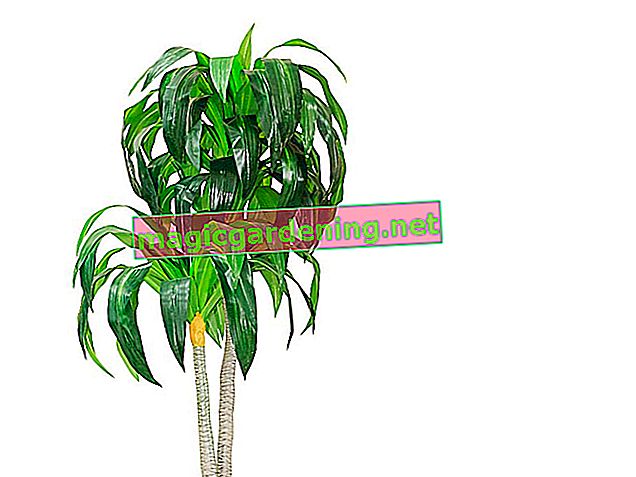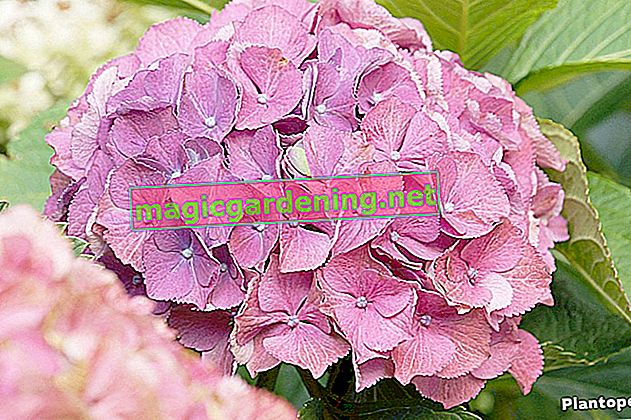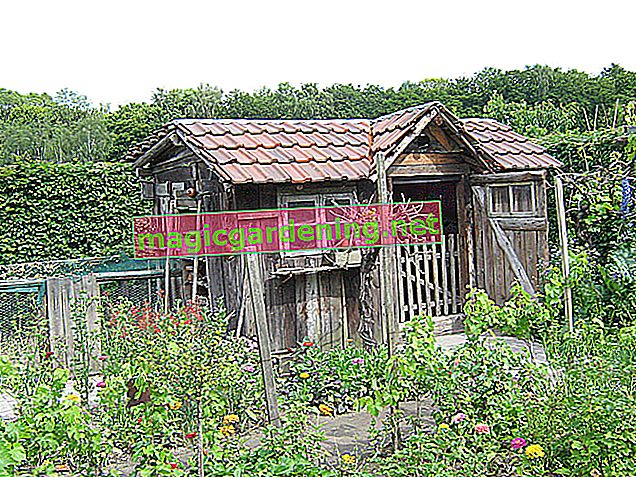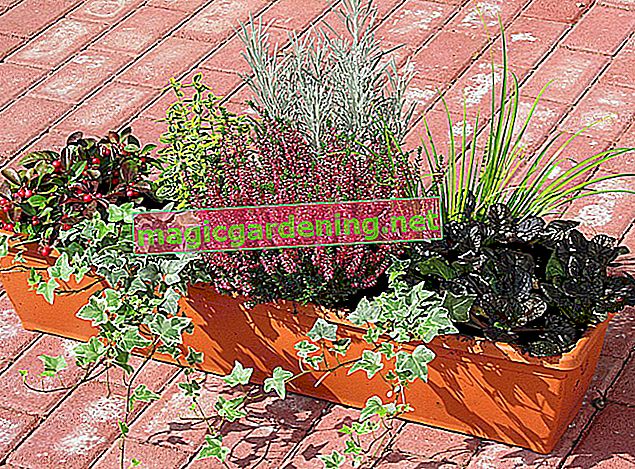
Cut beech hedge from day one - types of cut and dates
Beeches are at the top of the wish list when home gardeners create a formal deciduous hedge. Planted in a row, the native deciduous shrubs form an opaque privacy screen within a few years, act as a decorative fence or make themselves useful as green room dividers. Equipped with a robust cut tolerance, the woody plants take on almost any shape - provided that the pruning starts on the day of planting and continues seamlessly in the following years. The following overview summarizes when to perform which cut:
also read
- The right time to cut the beech hedge
- You cut back a beech hedge heavily in winter
- How fast is the beech hedge growth?
| Cut types | target | Appointment option I. | Appointment option II |
|---|---|---|---|
| Plant pruning | dense branching from base to tip | immediately after planting | in February after the year of planting |
| Upbringing | Step-by-step construction up to the final height with opaque branches | Mid-February to early March | Early June to late July |
| Topiary / main cut | light-flooded, well-branched beech hedge | Mid-February to early March | no |
| Care cut | Maintaining a healthy shaped hedge without balding | shortly after June 24th (St. John's Day) | by the end of July at the latest |
| Taper cut | Revitalize aged beech hedge | Late November to early March | no |
Cut your beech hedge in winter if it does not freeze badly on the chosen date. Temperatures down to -5 degrees Celsius are within the tolerance range. If you cut at lower temperatures, there is a risk that sap released at the interfaces will freeze, expand and tear the bark tissue.
background
When will it be cut?
When choosing a date for the selected type of cut, legal requirements must be taken into account. There are no alternatives for a thinning and rejuvenation cut in winter because the Federal Nature Conservation Act lays down precise guidelines at this point. In order to protect breeding birds and nesting wild animals, only maintenance prunings are permitted on trees from March 1 to September 30, which are limited to this year's growth. From October 1st to March 1st you can rejuvenate and thin out a hedge, provided that it has been ensured in advance that there are no wild animals in hibernation.Plant pruning sets the course - step-by-step instructions
Autumn is the best time to plant a beech hedge. At this time of year, tree nurseries offer bare-root young plants from a purchase price of 1 euro. Beeches planted in September and October take root in good time before the first frost and start the first season with a vital growth lead. When all beech bushes are lined up, the planting work is rounded off by a strong pruning. This is how you proceed professionally when pruning plants:
- Sharpen and clean secateurs
- Cut back unbranched shoots by half, as shown in the illustration below
- Completely remove damaged branches or shorten to healthy wood
If a hobby gardener dedicates himself to a plant pruning for the first time , the strong pruning on the first day hurts his soul. Nevertheless, you should make up your mind to do so, because the resulting benefit will have an impact on growth for years. A long-lasting juice jam occurs at each intersection . Thereupon the growth of all the shoots below is stimulated, so that the deciduous shrub branches out bushy and compact from the base. The planting of a beech hedge should be completed by the end of February of the following year at the latest.
Prepare hedge trimming properly - you should pay attention to this
The best tool for cutting a beech hedge is an electric hedge trimmer. (€ 135.56 at Amazon *) If the hedge is very long, the power cable becomes an obstacle. From a length of more than 10 meters, the use of a petrol-powered hedge trimmer is recommended. Battery-operated models are primarily suitable for small hedges due to their limited performance. Manual hedge trimmers have gone out of fashion for cutting a beech hedge due to the associated sweaty use. Regardless of the hedge trimmer model used, the following preparatory work must not be neglected:
- Check all safety precautions on electric and petrol hedge trimmers
- Sharpening manual hedge trimmers
- Carefully clean the blades and cutter bars and disinfect them with alcohol
- Put on protective goggles and work gloves
During the preparatory work, please note that dirty hedge trimmers are one of the most common causes of the spread of plant diseases and pests. If you clean the cutting blades before and after cutting, pathogens don't stand a chance.
Raising a beech hedge conically - Instructions for the rearing cut
In view of a growth rate of up to 50 centimeters per year, you will not be allowed to take a break from hedge trimming after pruning. So that your new beech hedge develops into an elegant, harmonious feast for the eyes, the upbringing is on the program from late winter of the second year of standing. On the way to the desired height, give your beech hedge a conical shape with a narrow crown and wide base, as shown in the illustration below. This way, the lower leaves and shoots also catch enough sunlight so that the hedge does not become bald. This is how the educational cut succeeds:
- For orientation, stretch cords between wooden pegs
- Mark the wider base at the bottom and the narrower crown at the top with a taut cord
- The higher the hedge, the wider the base
- Also cut the sides according to this pattern
Raise the foliage hedge in several stages to the desired height. To do this, leave 5 to 10 centimeters of the increment with each cut. This cut slows down the flow of sap and directs it further into the side shoots. A 200 centimeter high privacy hedge thrives reliably opaque if you use scissors twice a year during the training phase.
Tips
From a cut, spray your beech hedge with water. A little moisture on leaves and shoots reduces the build-up of dust, optimizes the cut and keeps the hedge trimmer sharp longer.
Cutting beech hedge in February - instructions for topiary
In practice, it has been found that a beech hedge grows thicker and more evenly when the topiary takes place in February. The advantages of this early cutting point are obvious. The bushes are not yet fully in the sap, so that they can easily cope with a strong cut. Due to the longer-lasting regeneration, growth does not begin until May, so that the hedge is presented accurately and well-cared for by then. How to skilfully cut a beech hedge:
- Tension cords for orientation and keeping the trapezoidal shape
- Sides of the hedge: Keep the cutter bar parallel and move it out of your shoulders with your arms straight
- Cut: from bottom to top
- Hedge crown: swing the cutter bar back and forth from your back in a horizontal position
- Incision: from left to right or from right to left
Always position yourself so that your gaze is directed towards the uncut hedge areas. The more you move your arms while cutting, the more uneven the cut will be.
Digression
Cut neighboring plants
The shadows cast by neighboring plants can also create unsightly gaps in a regularly cut beech hedge. You should therefore prune any neighbors that are too large and put your hedge in the shade. You can close large holes with a simple construction aid. Use thin bamboo sticks and plant ties to connect adjacent branches so that the gaps are bridged. At the same time, cut into the surrounding shoot tips a little. Since beeches sprout cheerfully from old wood, the holes close quickly. You can then remove the temporary bridges again.Flawlessly cared for in autumn and winter - this is how the care cut works
The ideal time window for the second pruning of the year traditionally opens on June 24th, St. John's Day. Cut your beech hedge into shape again by the end of July so that the well-groomed appearance is retained in autumn and winter. Before you dedicate yourself to the maintenance pruning, please examine the hedge for nesting birds. If you find what you are looking for, postpone the date until the feathered hedge dwellers have finished their breeding business.
The cut differs from the topiary in winter in that you do not cut at least a third of this year's growth . The summery maintenance cut aims to release the beech hedge into autumn and winter with a flawless appearance.
Do not cut off the entire annual growth. Some of the fresh leaves ensure that your beech hedge will have sufficient nutrient reserves for a dense, healthy foliage for the next year as well.
Revitalizing aged beech hedge - instructions for rejuvenating pruning
If the pruning and pruning fail over many years, every beech hedge turns into an aged, unsightly undergrowth. That is no reason for clearing. With a taper cut, turn back time and bring the green wall back into shape. Ideally, you should proceed in stages , as illustrated in the figure below. Thanks to this care, the deciduous shrubs can regenerate between cuts. How to do it right:
- Best time: late November to late February / early March on a frost-free day
- First stage: cut back one side of the hedge except for short shoots with at least one branch
- Second stage: shorten the top by half or a third and cut back both flanks radically
- Third stage: trim the second side of the hedge except for small stumps with one or two side branches
- Organically fertilize the beech hedge with compost after each stage
Alternatively, you can cancel a stage by cutting back the top during the first stage and the flanks in connection with the next stage. The shortening to two levels comes into consideration if the beech hedge is only slightly aged. In this case, it is up to you to decide whether you actually need to cut the height by half or leave it at a third. Act here according to the rule of thumb: the higher the proportion of dead wood, the more extensive the rejuvenation cut.

frequently asked Questions
Which plants can I plant under my beech hedge? A 50 centimeter wide strip lies fallow in front of the hedge.
With a beech hedge with half a meter of space to the front, you can draw on the full when designing an underplanting. A natural combination of bulb flowers for the spring aspect, blooming summer perennials and decorative ornamental foliage perennials is recommended. Snowdrops, tulips and daffodils open the bouquet, followed by sky-blue Caucasus forget-me-nots and red elf flowers. Imposing hostas, colorful purple bells and magnificent bergenias round off the floral pedigree for the beech hedge impressively.
Which type of beech is best as a hedge plant?
The native European beech (Fagus sylvatica) ranks at the top of the list of recommended hedge plants. European beech tolerates shade and pruning, has dense foliage and can live up to 400 years. The deciduous bushes root deeply through the topsoil, which guarantees reliable stability. The premium variety is the copper beech 'Purpurea', which impresses with its deep red leaves.
The 3 most common mistakes when cutting a hedge
If a beech hedge does not meet expectations, there are usually 3 typical cutting errors responsible. The most common mistakes when cutting a deciduous hedge with tips for solving the problem summarizes the following overview:
| error | annoying result | correction |
|---|---|---|
| cut too late in autumn | fresh shoots with significant frost damage | Cut back frozen shoots at the end of February |
| top-heavy hedge shape with a broad crown and narrow base | rapid scaling from below due to lack of light at the base | Education of the hedge to a trapezoidal shape |
| crooked hedge edges | crooked hedge shape | henceforth stretch cords for orientation |
The experts at the Saxon State Horticultural Institute draw attention to another omission. With the summer pruning around Midsummer Day, home gardeners cut back hedges, like a beech hedge, too much. At least a third of this year's increase should remain. The fresh leaves make an important contribution to building up nutrient reserves for next year's growth.
YoutubeTips
Do you prefer to cut your beech hedge with an electric hedge trimmer? Then lay the power cord over your shoulder. This way, in the heat of the moment, the cable cannot be accidentally cut.


